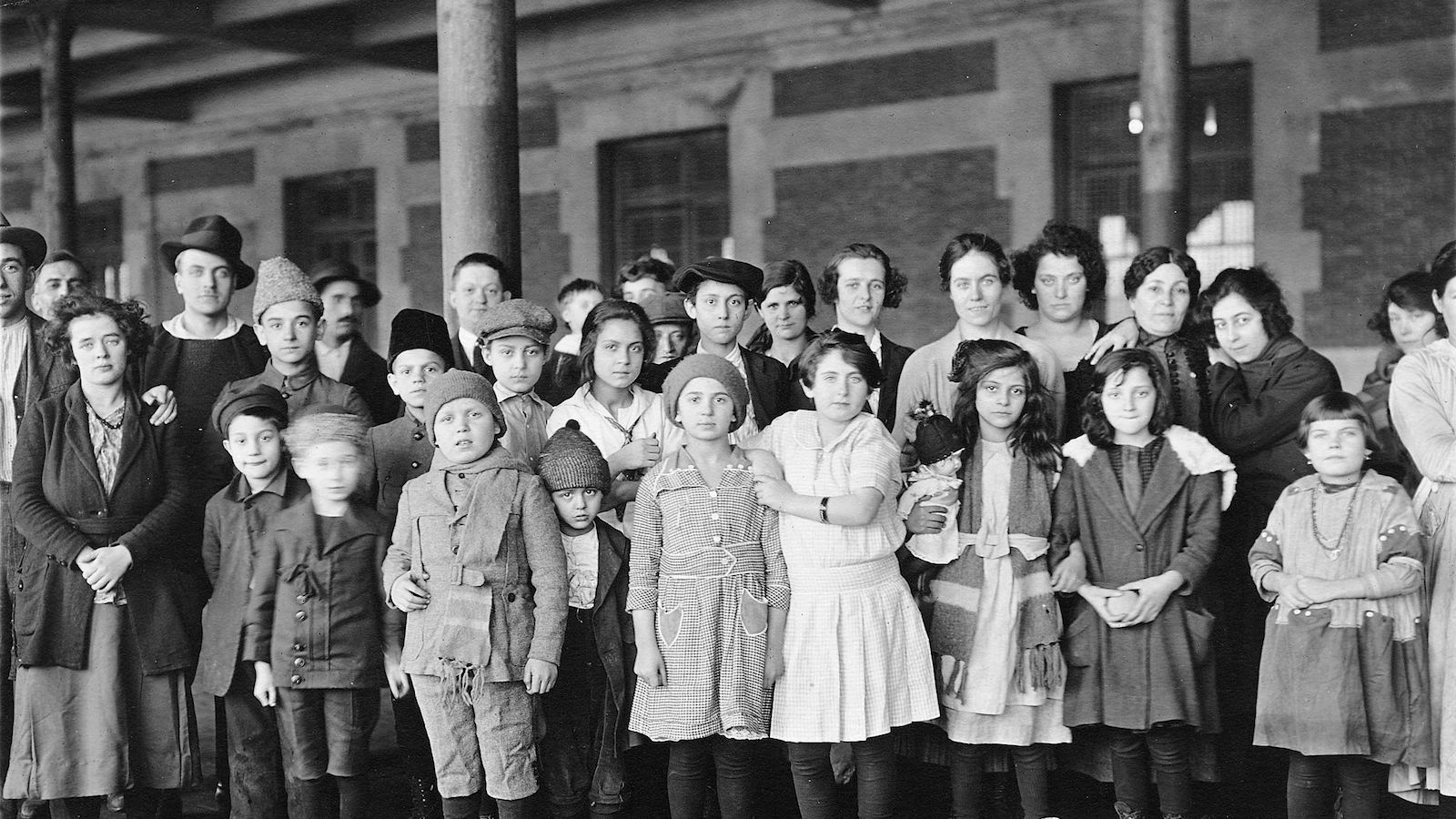In 1880, in a Jewish population of approximately 250,000, only one out of six American Jews was of’ East European extraction; 40 years later, in a community which had reached four million, five out of six American Jews came from Eastern Europe. Indeed, at that time over a third of East European Jewry had left their countries of origin, and 90 percent of them emigrated to the United States. Such an enormous wave of immigration had a tremendous effect on the American Jewish community.
The newcomers tended to cluster in the poorer districts of the metropolises. Most of them settled in the great commercial, industrial, and cultural centers of the northeast (New York in the first place, then Philadelphia, Boston, and Baltimore) and of the Midwest (particularly Chicago). Certain neighborhoods in these cities became almost exclusively Jewish, congested and bustling with a rich, typically Jewish way of life.
Yiddish Culture and Institutions
Through hard work and under extremely difficult conditions, these Jews established themselves in the garment industry, petty trade, cigar manufacture, construction, and food production. About 30 years after the beginning of the mass immigration, and not without bitter struggles, the Jewish trade union movement emerged as a formidable force, supported by over a quarter of a million workers. A flourishing Yiddish culture–poetry, prose, and drama–revolved mostly around the themes of the hardships of the Jewish worker’s life, expressing the reality of daily existence within a community of immigrants.
Although the majority of the immigrants were Orthodox and attached to the congregational traditions of their forefathers, life in America transformed them. The number of those volunteering to organize corporative bodies of the congregation dwindled rapidly, and former Eastern European institutions were replaced by a host of other organizations, ideological societies, confraternities, trade unions, lay charitable institutions, cultural centers, clubs, and leisure enterprises.
Interdenominational Tensions
Economic pressures, opportunities for social promotion, the cult of liberty and individualism–all these contributed to the disintegration of Orthodox Jewry. How, for example, could one join the American race for success while observing the Sabbath? Nevertheless, Reform Judaism, although it remained dominant, did not encompass the entire American community. Rivalry between Reform, Conservative, and Orthodox Judaism was a major contribution to the emergence of a religious pluralism unique to American Jewry.

Help us keep Jewish knowledge accessible to millions of people around the world.
Your donation to My Jewish Learning fuels endless journeys of Jewish discovery. With your help, My Jewish Learning can continue to provide nonstop opportunities for learning, connection and growth.
All these ideological movements, social tensions, religious currents, institutions, and organizations, however, did not prevent the development of solidarity and a strong group consciousness among American Jews. Charitable organizations constituted a pivotal axis for identification with the entire community. Between 1895 and 1920 many of these bodies formed large “federations” which eventually became the most influential factors in community consolidation, as well as a symbol of Jewish continuity.
World War I, Zionism and Anti-Semitism
The avalanche of disasters that befell East European Jewry during World War I and its aftermath precipitated this development of American Jewish charitable organizations. The principal Jewish aid organization, “the Joint” (American Jewish Joint Distribution Committee), established in November 1914, organized large-scale financial, medical, and social relief for their Jewish brethren in Europe, whereas the American Jewish Committee, the oldest Jewish defense organization in the U.S., afraid of being accused of dual loyalty, was content to practice a policy of discrete diplomacy.
The same postwar period witnessed the growth of the American Zionist movement which was developing a spirit entirely different from the radical brand of European Zionism. Led from August 1914 by Louis D. Brandeis, it combined Zionist allegiance with respect for American pluralism and for the democratic and progressive ideals of American culture at large.
Anti-Semitism began rearing its ugly head in America in the 1890s. The well‑established white Christian community despised the masses of poor immigrants who flocked to the United States, including the East European Jews, and regarded them as a threat to the American way of life and mode of government. The success of the German Jews, on the other hand, aroused envy and antagonism. A prolonged propaganda campaign with strong anti-semitic undertones led to the 1921‑1924 legislation that drastically limited immigration and revealed an explicit preference for the “Nordic race.”
Yet the fundamental characteristics of American society were too strong to permit the arrest of integration, and Jews continued to advance in every field. Bankers, scholars, judges, artists, and writers continued risingto prominence and making their impact on American life.
Reprinted with permission from A Historical Atlas of the Jewish People (Schocken Books).



